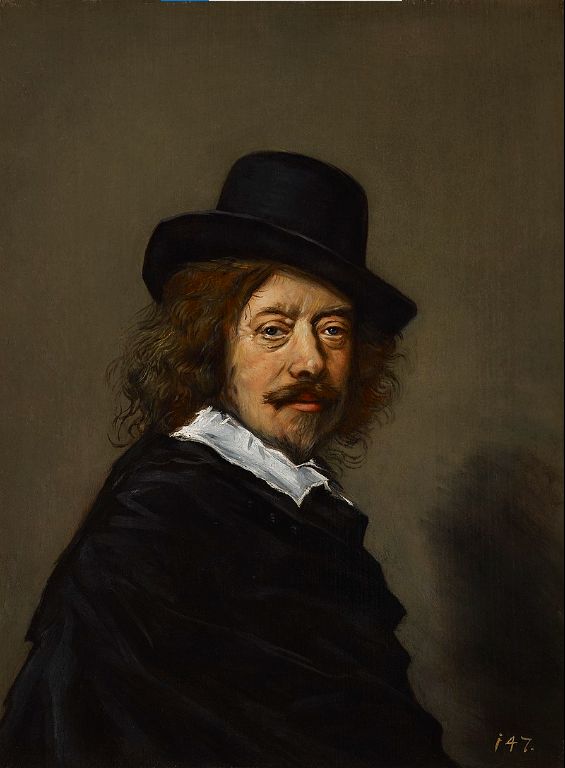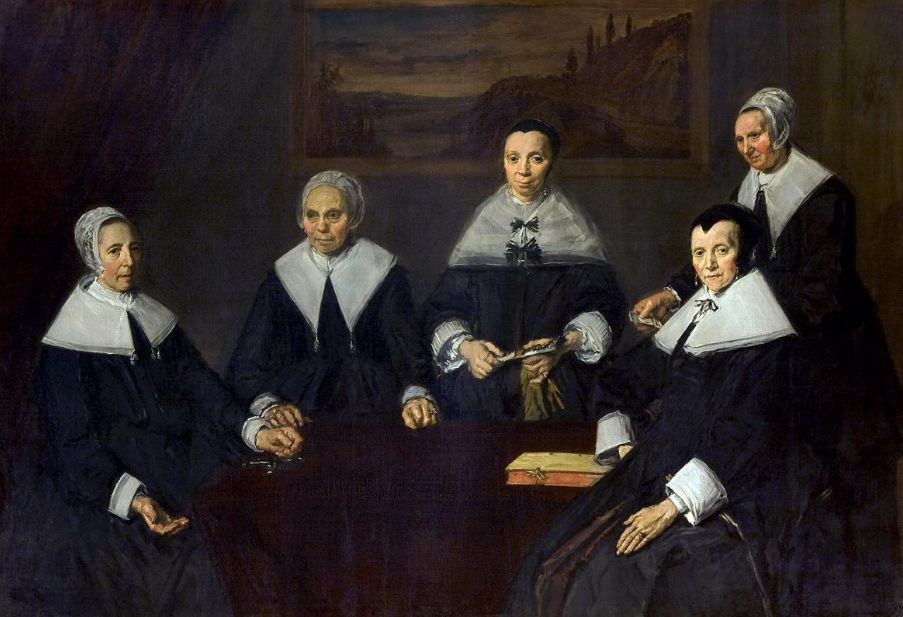Frans Hals (circa 1581 or 1585–1666) was one of the founders of the Dutch school of painting, particularly known for his portraits and depictions of contemporary life. His works often feature the citizens of Haarlem, both in single portraits and group scenes. In these portraits, Hals is renowned for his unique painting style and his meticulous attention to expressions and character.

One of Hals's most representative works is "The Merry Drinker." In this painting, the subject's cheeks are flushed from drinking, his eyes glimmering, lips slightly parted as if about to speak. One hand is swiftly raised while the other grasps a wine glass, seemingly surprised by the viewer's sudden appearance. Through skillful brushwork and color use, Hals effectively conveys the character's emotions and movements, making the viewer feel the subject's breath and emotions.

In "The Merry Drinker," there may be a desire to express taste or the act of drinking, or even a political implication. The character wears the medal of Prince Maurice of Orange, hinting at his association with the anti-Burgher faction, which nearly transformed the newly established Republic into a monarchy. Regardless of the painting's intent, it is immediately dominated by a strong sense of realism. Hals's ability to capture lively expressions and spontaneous moments gives his works a sense of vitality and immediacy.
Technically, Hals created a powerful sense of realism and visual impact through his masterful brushwork and use of color. For example, he delicately outlined the beard and mustache with dark strokes, highlighted the reflections on the glass and the sweaty forehead with white paint, and vigorously sketched the folds on the sleeves with dark strokes. Such details allowed Hals to convey the emotions and dynamics of his subjects successfully. As Hals reportedly said, "Put in his handwriting, and the sentence becomes meaningful."
During his time, the Dutch art market was highly competitive, with distinctiveness and innovation being rewarded, leading to rapid rises and falls in artists' reputations. In the first decade after the establishment of the Dutch Republic, Hals's works faithfully reflected the era's optimism and boisterousness. However, by the 1640s, his style fell out of favor as the influence of Van Dyck's softer style, more suited to portraying the newly wealthy citizens and their nascent aristocratic manners, took hold.
Despite this shift, Hals did not alter his style. Although he fell into debt due to a lack of commissions, he continued to accept portrait commissions, often going against contemporary fashion. He maintained his unprecedentedly free brushwork and increasingly darkened tones. His group portrait for the female governors of the Haarlem Almshouse in 1664 is particularly notable. In this painting, Hals used serious whites, grays, and powerful blacks to portray five distinct individuals with different expressions and features, each convincingly rendered.
In this group portrait, the maid on the right and the youngest woman on the left gaze towards the three central female governors. These three governors, with shrewd and worldly expressions, look at the viewer as if they are evaluating an applicant's suitability for a position. Their faces reflect the relentless passage of time and a sense of loneliness. Hals was over 80 when he painted this, and despite receiving a small pension from Haarlem, he often found himself in poverty. This painting can be seen as a long contemplation and profound reflection on the people and his own awkward position in this small town. While there is a notion that Hals himself lived in this almshouse, he indeed received payment for this and another group portrait of the male governors, indicating that the almshouse commissioned and paid for these works.

Frans Hals's artistic achievements lie not only in his technical prowess but also in his profound insight into and portrayal of human emotions and character. His unique painting style and detailed depiction of individuals have secured his place in art history. Despite the difficulties of his later years, Hals's artistic accomplishments and contributions to the Dutch school remain indelible. His works are not just visual feasts but also profound explorations and expressions of human emotions and character.
Frans Hals's artistic career was not just a personal achievement but also a crucial chapter in the development of the Dutch school of painting. His works reflect the social landscape of his time and, through his unique artistic language, provide invaluable artistic heritage for future artists and viewers. Hals's paintings are a celebration of human emotion and character, and his legacy continues to shine brightly in the halls of art history.